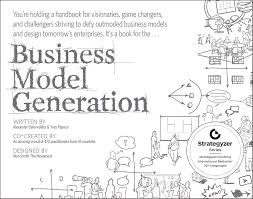*
The Business Model Canvas (BMC), a strategic management and lean startup template, has revolutionized the way businesses approach planning, innovation, and growth. Developed by Alexander Osterwalder, the BMC provides a visual framework that helps entrepreneurs and businesses of all sizes to define, design, challenge, and pivot their business models.
The Business Model Canvas: A Catalyst for Business Development and Growth
The Business Model Canvas (BMC), a strategic management and lean startup template, has revolutionized the way businesses approach planning, innovation, and growth. Developed by Alexander Osterwalder, the BMC provides a visual framework that helps entrepreneurs and businesses of all sizes to define, design, challenge, and pivot their business models.
How the Business Model Canvas Drives Business Development and Growth
- Strategic Clarity and Focus:
- The BMC forces businesses to articulate their core value proposition, target customer segments, and revenue streams. This clarity helps in aligning resources and efforts towards achieving strategic goals.
- By identifying key partnerships and channels, businesses can optimize their operations and distribution strategies, ensuring efficient delivery of value to customers.
- Innovation and Adaptation:
- The BMC encourages a culture of innovation by prompting businesses to explore new ideas and experiment with different business models.
- By regularly revisiting and updating the canvas, businesses can adapt to changing market conditions and customer preferences, remaining agile and competitive.
- Risk Mitigation:
- By mapping out the entire business model, the BMC helps identify potential risks and challenges early on. This enables businesses to develop mitigation strategies and contingency plans.
- By understanding the cost structure and revenue streams, businesses can assess their financial viability and make informed decisions about resource allocation.
- Collaboration and Communication:
- The visual nature of the BMC facilitates collaboration among team members, stakeholders, and investors. It provides a common language and shared understanding of the business model.
- By using the BMC in workshops and brainstorming sessions, businesses can foster creativity and generate innovative ideas.
- Customer Centricity:
- The BMC emphasizes the importance of understanding customer needs and preferences. By focusing on value propositions and customer segments, businesses can tailor their offerings to meet specific customer requirements.
- By analyzing customer relationships and channels, businesses can build strong customer loyalty and improve customer satisfaction.
Expanded White Paper
To delve deeper into the benefits and applications of the Business Model Canvas, consider expanding on the following aspects:
- The Nine Building Blocks of the BMC:
- Provide detailed explanations of each building block, including value propositions, customer segments, channels, customer relationships, revenue streams, key resources, key activities, key partnerships, and cost structure.
- Discuss how these elements interact and influence one another, creating a cohesive business model.
- Real-World Examples:
- Showcase successful case studies of businesses that have effectively utilized the BMC to drive growth and innovation.
- Analyze how these businesses have adapted their business models in response to changing market dynamics.
- Advanced Techniques and Tools:
- Explore advanced techniques for using the BMC, such as the Business Model Canvas Plus and the Value Proposition Canvas.
- Discuss how to integrate the BMC with other strategic tools, such as SWOT analysis and PESTLE analysis.
- The Role of Digital Transformation:
- Examine how the BMC can be used to develop digital business models and leverage emerging technologies.
- Discuss the impact of digital disruption on traditional business models and the importance of adapting to the digital age.
- Future Trends and Implications:
- Analyze emerging trends in business models, such as subscription models, platform-based models, and sharing economy models.
- Discuss the potential implications of these trends for businesses and the role of the BMC in navigating the future.
Reference List
- Books:
- Osterwalder, A., & Pigneur, Y. (2010). Business Model Generation: A Handbook for Visionaries, Game Changers, and Challengers. John Wiley & Sons.
- Ries, E. (2011). The Lean Startup: How Today's Entrepreneurs Use Continuous Innovation to Create Radically Successful Businesses. Crown Business.
- Websites:
- Strategyzer: https://www.strategyzer.com/business-models-the-toolkit-to-design-a-disruptive-company
- Canvasly: https://creately.com/usage/business-model-canvas-template/
- Research Papers:
- Academic journals such as Strategic Management Journal, Journal of Product Innovation Management, and Journal of Business Venturing often publish research on business model innovation and the BMC.
By delving into these areas, you can create a comprehensive white paper that provides valuable insights into the power of the Business Model Canvas for driving business development and growth. Contct keencomputer.com for details.
